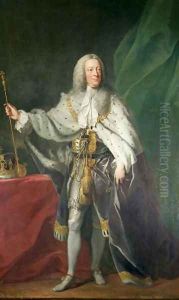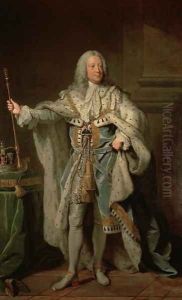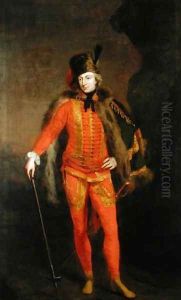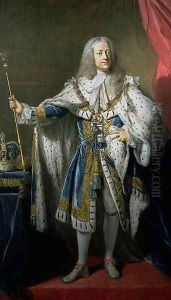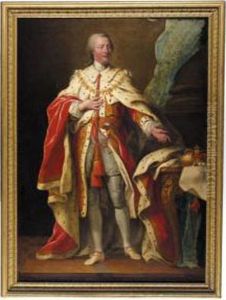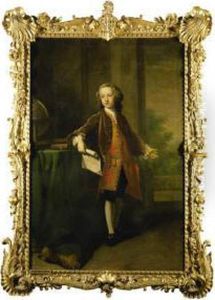John Shackleton Paintings
John Shackleton was a British painter born in 1714, known primarily for his portraits, who played a significant role in the art scene of 18th century Britain. Not much is known about his early life or training, which is common for many artists of the period. However, Shackleton emerged as a prominent portraitist in the mid-18th century, becoming the principal painter to King George II by 1749, a position that attested to his skill and the high regard in which he was held.
Throughout his career, Shackleton painted numerous portraits of the British aristocracy, military figures, and other notable personalities of his time. His work is characterized by its elegance and the detailed depiction of his subjects’ attire, capturing the fashion and aesthetics of the era with remarkable precision. Shackleton's portraits are notable for their sophisticated compositions and the dignified portrayal of his subjects, reflecting the social and cultural values of 18th century Britain.
Despite his success and contributions to British portraiture, John Shackleton's work was somewhat overshadowed by the rising prominence of his successors, such as Sir Joshua Reynolds and Thomas Gainsborough, who would go on to redefine British portraiture in the latter half of the 18th century. Nonetheless, Shackleton's portraits remain an important part of Britain's artistic heritage, offering insight into the period's visual culture and societal norms.
Shackleton's position as Principal Painter in Ordinary to the King until his death in 1767 indicates the esteem in which he was held during his lifetime. His works are preserved in several major collections, including the National Portrait Gallery in London, reflecting his enduring legacy. John Shackleton passed away in 1767, leaving behind a body of work that, while perhaps not as widely recognized as that of his contemporaries, played a significant role in the development of portrait painting in Britain.
